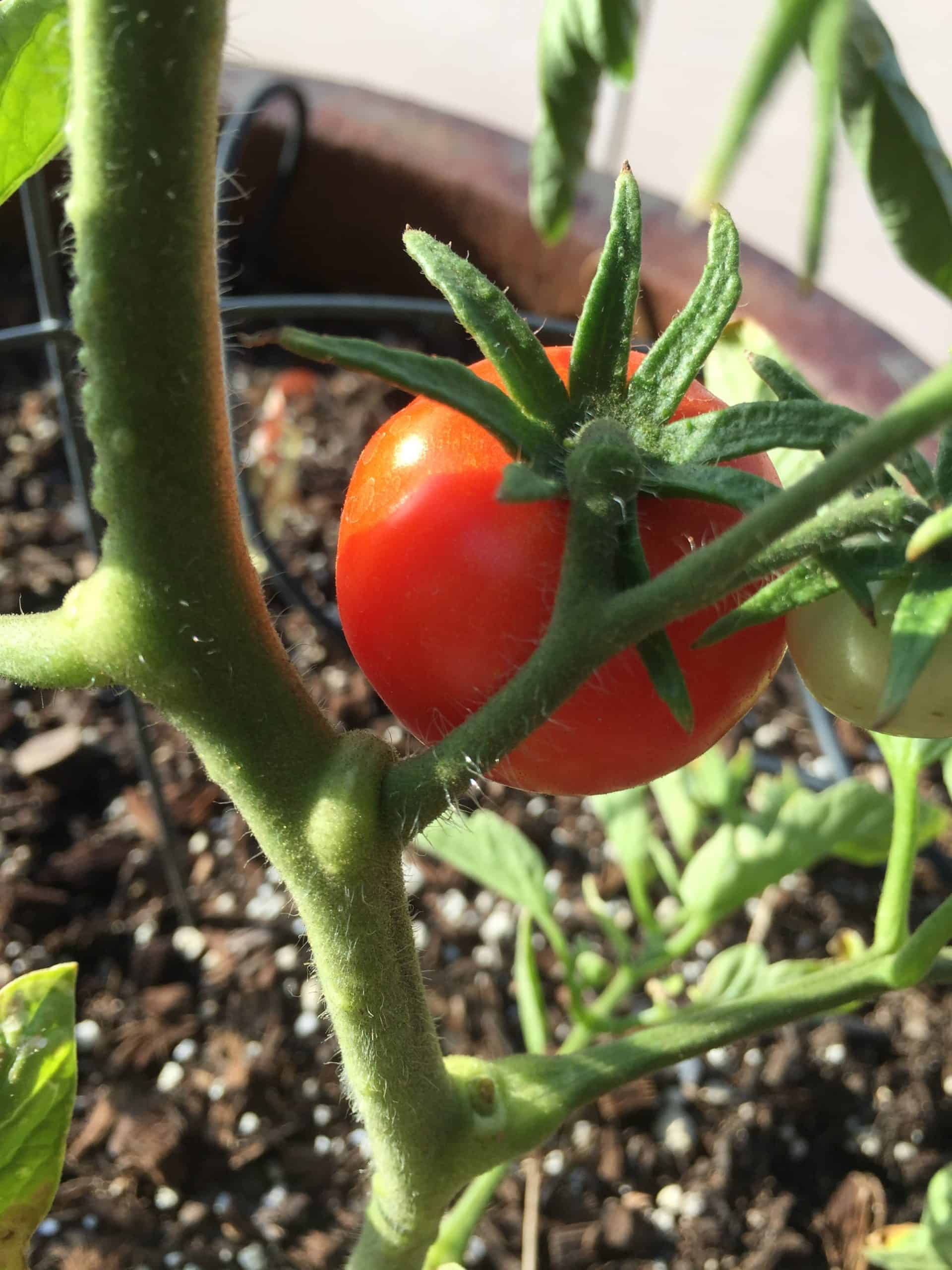Last Updated on August 14, 2024 by Alice Benny
When you decide to plant tomatoes in your garden, there are two types from which to choose –determinate and indeterminate. There are distinct differences between the indeterminate tomatoes and determinate tomatoes and reasons you may select one over the other.
Although we’ll do a comparison between the two types later in this article, our main focus will be indeterminate tomatoes which will give you mouthful after mouthful of juicy goodness all season long.
What are Indeterminate Tomatoes
Indeterminate tomato vines grow and extend in length throughout the growing season. Due to their growth habit, they’re sometimes referred to as vining tomatoes. Another name for indeterminate tomatoes is cordon tomatoes.
Indeterminate tomato varieties set and ripen fruit throughout the growing season until they’re killed by frost. They provide a slow and steady supply of tomatoes all season long.
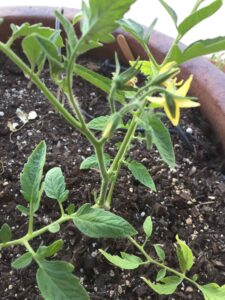
Their production slows down, however, when the temperatures begin to cool down in the fall. While tomatoes, in general, are heat tolerant, they struggle to produce in extreme heat, such as that experienced in the southern states during the summer.
If the variety you’re looking at is referred to as a bush tomato, it’s likely to be a determinate variety, not indeterminate. There are exceptions, however, such as Stupice, a compact, indeterminate variety that is well suited to containers.
List of Indeterminate Tomato Varieties
Most tomato varieties, including cherry types and heirlooms, are indeterminate. Many dwarf varieties are also indeterminate. Popular indeterminate varieties include:
- Big Boy – great for slicing
- Beefsteak – can grow to four pounds each
- Sweet Million
- Sungold
- Brandywine
Some other types of indeterminate tomatoes are:
- Aussie – meaty tomato
- Amarillo – type of cherry tomato
- Brandywine Yellow – yellow indeterminate tomato
- Cherry Roma
- Big Daddy – good slicing tomato
- Big Mama – good for sauces
- Better Boy
- Big Beef
- Aunt Ruby – green look
- Arkansas Traveler – for climates that are hot and humid
- Besser – sweet cherry tomato
- Black Cherry – sweet cherry tomato
- Big Red
- Black Plum
- Bonny Best
- Cherokee Green, Purple or Chocolate
- Cherry Baby – grows in clusters
- Cupid – cherry tomato
- Dona – good for sauces and for slicing
- Early Girl – meaty texture
- Favorita – indeterminate cherry tomato
- First Prize
- Five Star Grape
- Geronimo
- Giant Belgium
- Giant Beefsteak – can grow to 2 pounds
- Green Envy
- Honey Delight – yellow indeterminate tomato
- Italian Beefsteak
- Jubilee
- Kolb
- Ladybug
- Mighty Sweet – indeterminate grape-sized tomato
- Pink Wonder – pink flesh
- Ponderosa
- Porter – ideal for canning though you won’t get a crop all at once
- Red Currant
- Red Zebra
- Rose
The indeterminate tomato list above is adapted in part from The Gardening Channel.
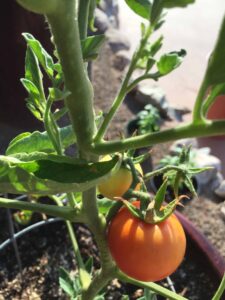
Early Producing Indeterminate Tomatoes
Early producing varieties, such as Early Girl, can be used to extend your tomato growing season because they produce and mature earlier than other indeterminates. However, they also quit producing and die back earlier in the growing season.
Due to this growth pattern, Early Girl tomatoes are sometimes referred to as semi-determinate tomatoes.
Other popular early-producing varieties include:
- Quick Pick
- Early Cascade
- Champion
- Stupice
Indeterminate Varieties
There are dozens of indeterminate varieties from which to choose. Before buying tomato seeds or tomato starts from a garden center, nursery or home improvement store, think about what you want to grow the tomatoes for.
You can find comprehensive lists of indeterminate tomato varieties with descriptions of how they grow and what the tomato is best for. Some examples are: for eating right off the vine, slicing for sandwiches, tomatoes for cooking, for sauces, and tomatoes for canning.
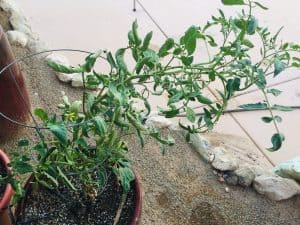
Supporting Indeterminate Tomatoes
Unlike determinate tomatoes, which generally have a bushy growth habit, indeterminate tomatoes produce a vine that often reaches 6 to 10 feet and even more.
To support this vast amount of growth, gardeners have some options. A sturdy stake, tomato cage or trellis will support the plant and keep it off the ground.
Be sure to place the cage or trellis support in when you plant the tomato plant. Put a tomato cage around each indeterminate tomato plant when they are still small. If you wait for them to grow large and need the support from a cage, you risk damaging the roots as well as breaking off branches to fit them in the tomato cage.
Indeterminate tomatoes can outgrow their tomato cages, even large cages. You can also DIY your own. A good material for DIY tomato cage is galvanized livestock fencing that has 4- to 6-inch woven squares.
The least amount of support is a stake. It works better for stockier determinate tomato plants. If you stake indeterminate tomato plants, insert the stake when the plant is 10 – 12 inches tall. Insert the stake 6 – 12 inches deep. Use garden twine, craft ribbon, panty hose, or strips of plastic to use as ties. It’s also a good idea to use a double-stake system which is inserting two stakes, one on each side of the plant.
Growing Indeterminate Tomatoes Upside Down
Alternatively, tomatoes can be grown upside down! In fact, some issues associated with indeterminate tomatoes are eliminated when grown upside down. These include:
- Keeps fruit off the ground
- Eliminates support issues
- Sunlight reaches all parts of the plant
- Takes up less space in your garden
- You can make your own upside-down planter using a two-gallon bucket.
If you choose to hang your tomato plants upside down, you’ll need a strong, sturdy support system to securely hold and support the weight of the plant and soil in which it’s grown.
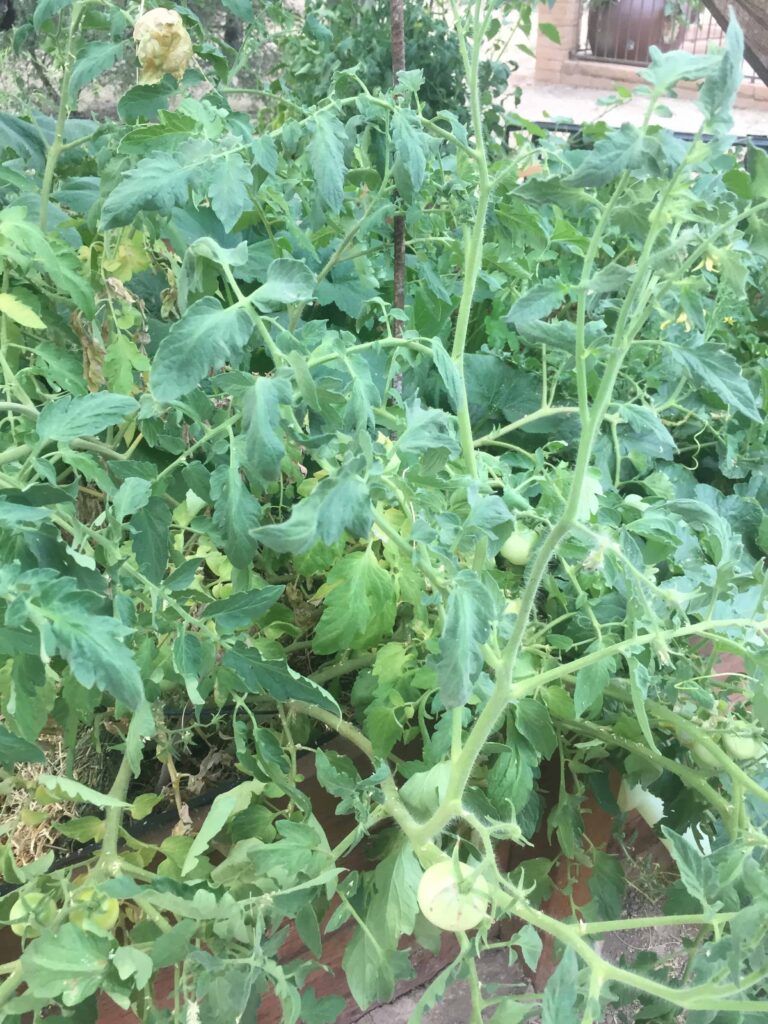
Trimming Tomato Plants
Tomato growers often overlook trimming indeterminate tomatoes because they don’t know how important it really is. Even tomatoes grown upside-down may require pruning to prevent them from dragging on the ground.
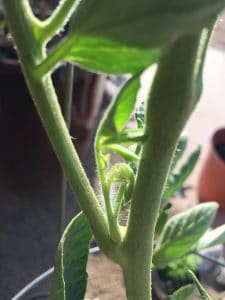
All indeterminate tomatoes should be trimmed or pruned for the following reasons:
- Remove suckers
- Keeps the vines under control
- Production of larger fruit
- Allows more airflow — keeps the leaves drier
- Prevents disease
- Allows adequate light penetration
- Better nutrition distribution for the vine
How to Prune Indeterminate Tomatoes
It’s easy to learn how to prune indeterminate tomato plants. Pruning is accomplished by removing suckers, lengthy and unwieldy branches, and lower leaves and branches.
- Look for growth in between the main stem and branches.
- Take hold of the shoot between your thumb and forefinger at the base.
- Gently snip off, being careful to not disturb the stem and branch.
You can easily prune indeterminate tomato plants as you take care of weeding or watering duties. It’s worth the effort because it’ll result in bigger fruit and healthier plants.
It’s best to prune frequently, only removing small amounts of the plant at a time. You never want to wait and then prune excessively.
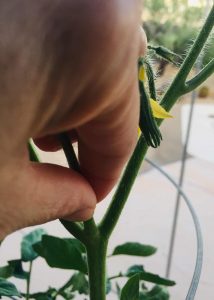
NEVER remove more than 1/3 of a plant’s leaves at a time as this will cause too much stress to the plant, making it susceptible to diseases and insects. However, thinning the plants will help you be able to get rid of tomato hornworms should they find their way to your garden.
Removing Suckers on Indeterminate Tomatoes
Suckers are the new little shoots growing in the crook between the tomato plant’s main stem and a branch at the base of the branch. You should remove these from the plant.
If you don’t remove them, they’ll eventually become a full-sized branch. Why not leave them, you may be asking? What’s wrong with another branch?
The energy required to grow the additional foliage pulls energy from the rest of the plant. You may get a few extra tomatoes on the additional branch, but it will be to the detriment of what the main plant would produce, resulting in reduced numbers of fruit that are smaller.
Removing the suckers also helps to keep the plant at a more manageable size.
- Smaller suckers — two inches or less — can be pinched off with your fingers.
- You’ll need a clean pruner or a pair of scissors to snip larger suckers, making a clean cut as close to the main stem as possible without damaging it or the branch.
Damaged stems are an invitation to disease and insects. Be sure to disinfect your pruning tools between plants so as not to spread disease.
It’s best to remove the suckers when they’re small for two reasons. The first is to prevent stress to the plant. The second is that any energy spent in the growth of the suckers is wasted and could have been directed toward more growth on the main vine and the production of larger tomatoes.
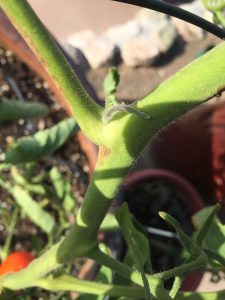
Never remove a sucker that originates directly below a blossom. Doing so will result in uneven growth and reduce the number of tomatoes the plant will produce.
If you decide to allow some suckers to grow, provide a tomato cage or trellis to provide the support required to support the additional growth of the plant.
Pruning Indeterminate Tomatoes to Prevent Disease
Remove low-level branches and those that are touching the ground or low hanging to keep them off of the ground. Leaves that come into contact with the ground tend to develop viral, bacterial and/or fungal infections that then spread to the rest of the plant.
Pruning to Control Growth
Some varieties of indeterminate tomatoes can reach lengths exceeding ten feet. It can be difficult to support a lengthy vine with a stake or cage. Therefore, you may want or need to prune the main branch once the tomato reaches the length you’re able to adequately support.
Don’t allow tomato plants that you grow upside down to touch the ground.
Determinate vs Indeterminate Tomatoes
The main difference between determinate and indeterminate tomatoes is how they produce fruit.
- Determinate varieties have a crop of fruit that ripens all at once over a short period of time, then the plants die.
- Indeterminate varieties produce fruit all season long and continue to do so until frost kills them. They produce tomatoes slowly throughout the season.
Determinate tomato plants are bushier and stockier. They have less aggressive vines. While indeterminate tomato plants grow taller and typically have a vine-type growing habit. Because indeterminates have an initial push to create a vine before producing fruit, they tend to start ripening a little later in the season.
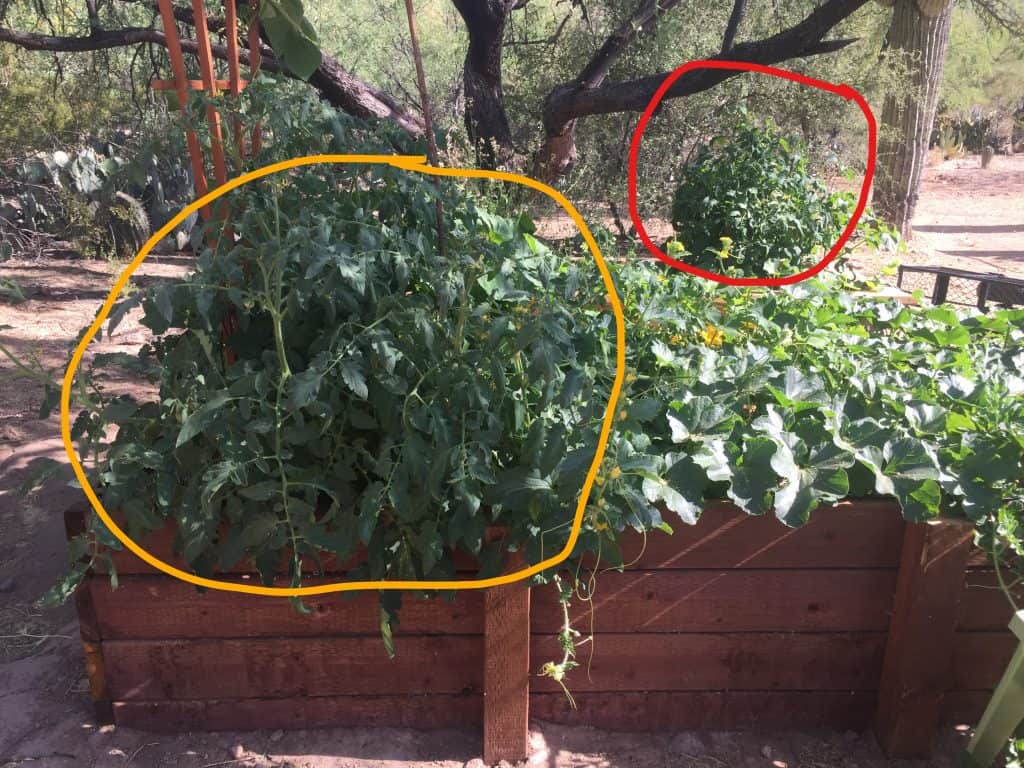
Because a determinate crop comes in all at once, people often grow these types of tomatoes for sauces and canning. Indeterminate tomatoes are great for eating fresh all season long.
Another difference between determinates and indeterminates is you should trim or prune the suckers growing from indeterminate tomato plants. This is not necessary with determinates.
Consider Your Climate
In addition to thinking about what you want to grow the tomatoes for, another way to decide if you want determinate vs indeterminate tomato plants is consider your growing zone.
Growing indeterminate tomatoes is a way to maximize the growing season and utility of a plant. As long as it has conditions to support its growth, it will continue to produce vibrant tomatoes until frost.
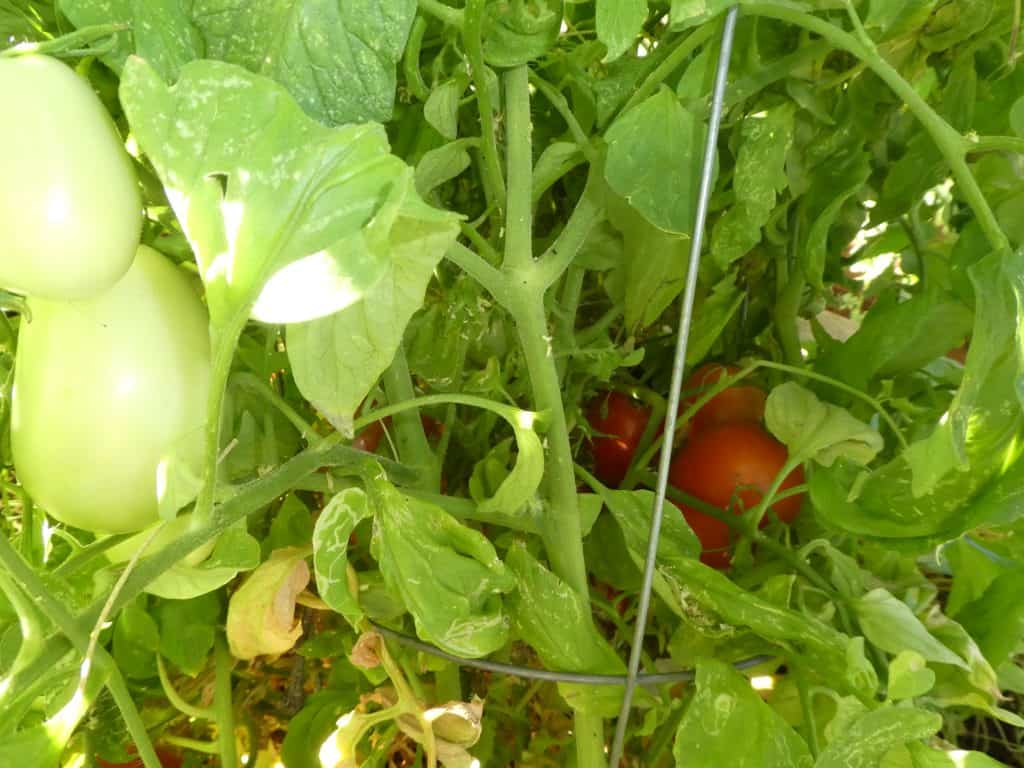
It’s a good choice for areas with a temperate climate. In many hardiness zones, you can grow tomatoes through December and into January if it’s mild. They will hang on until they are damaged from frost.
The downside to this is some of those areas have very hot summers. If you can keep the indeterminate plant alive in the heat, it will produce later in the year.
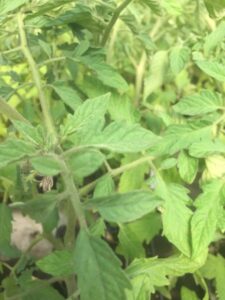
Garden Bed or Containers
Determinate tomatoes are better for pots than indeterminate tomatoes. You can grow indeterminate tomatoes in pots and containers if the containers are large AND you have excellent support for them such as a large tomato cage.
Dwarf varieties of indeterminate tomatoes are the best choice if growing in pots.
Tomato supports will help their growth as well as lessen the occurrence of many diseases and insects which start at the ground level. It’s important to keep as much of the plant off the soil as possible.
If you’ve had pests, such as aphids and tomato horn worm, etc. affect tomato plants in a garden bed, you may want to try growing them in containers. It’s easy to replace or replenish the soil before growing season.
The advantage of container gardening is that it’s a great way to have a garden in small spaces. Containers are ideal for patios and balconies, areas with poor soil, and areas in which you don’t have property to grow tomatoes or a garden.
It also can be a way to minimize pests, sometimes easier than if they were in a garden bed. Where I live, we have javelina. If the tomato plants are uncovered, they will be eaten within days. (I learned this the hard way.) Instead, I have planters filled with indeterminate tomato plants in my backyard. It is surrounded by a wall. Javelinas can’t get to them. However, the pots are very large.
Just keep in mind, when growing indeterminate tomatoes in containers that they’ll need a way to spread. You’ll just need to have good supports for them, such as large tomato cages.
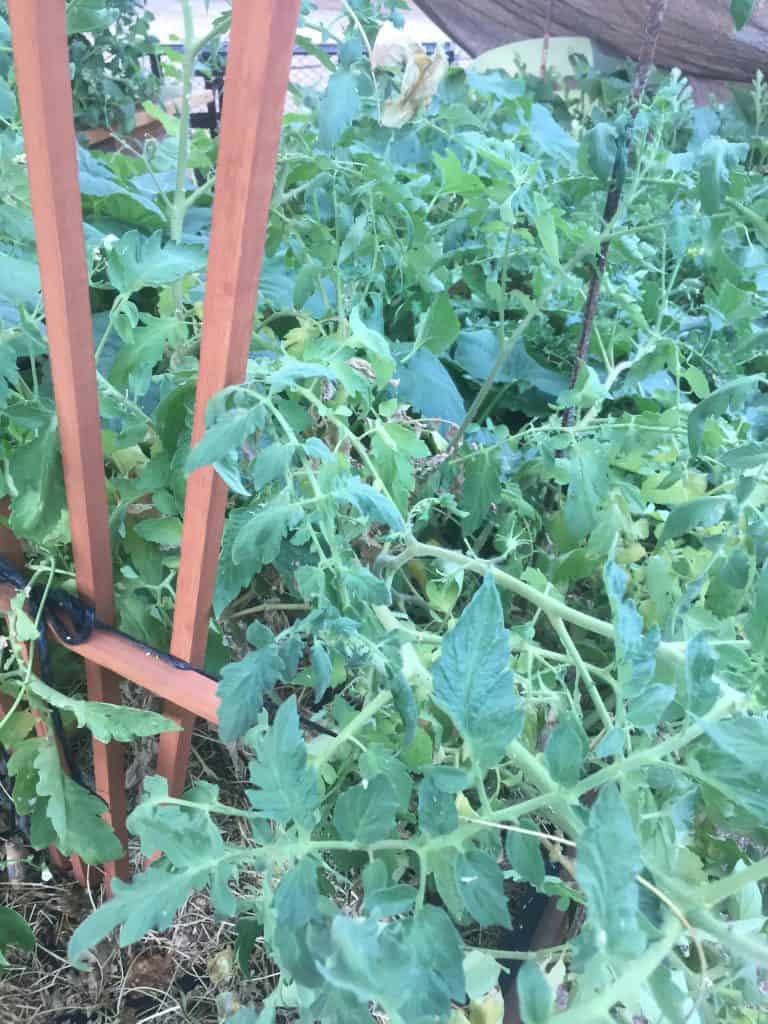
Growing Lots of Indeterminate Tomatoes
When I first started gardening, I didn’t know there were different types of tomatoes that do better in different climates. Nor did I know there was a difference between determinate vs indeterminate tomatoes. I’d buy a tomato starter plant, plant it in my garden, and hope for the best.
What a difference pruning suckers from indeterminate tomatoes makes! Do it properly, and you’ll have a good tomato harvest all year.
It’s important to take care in choosing what types of tomatoes to plant for your climate. It’s also important to consider what month you are planting. Consider if it’s the beginning of the season, the middle of the season, or late in the season.
Understanding the difference between indeterminate and determinate tomatoes will impact how you should care for the plant to maximize how many tomatoes grow.
You’ll want to maximize the conditions so you can have a long growing season and time for your plants to produce lots of tomatoes.
Indeterminate tomatoes will produce tomatoes for your table all season long. Planting early producing varieties, such as Early Girl, Quick Pick or Early Cascade, will extend your growing season.
Pruning indeterminate tomato vines produces a healthier vine and larger fruit. Beefsteak tomatoes and Big Boy produce really large fruit and make excellent slicing tomatoes.
Growing Tomatoes All Year
Although they don’t produce a hefty crop of tomatoes all at once like determinate tomato varieties, you can use indeterminate tomatoes for canning as well as cooking and fresh eating.
I love that where I live in hardiness zone 9b, I can enjoy fruits from indeterminate tomato plants well into December and into January if we don’t have a freeze. With our very hot summers, I actually get more tomatoes in fall. Caging and staking the plants is key in order to support their large branches and heavy growth.
Plant some tried and true tomato varieties in your garden. Also, remember to also test out a new variety every now and then, especially the heirlooms. You may find a new favorite.

